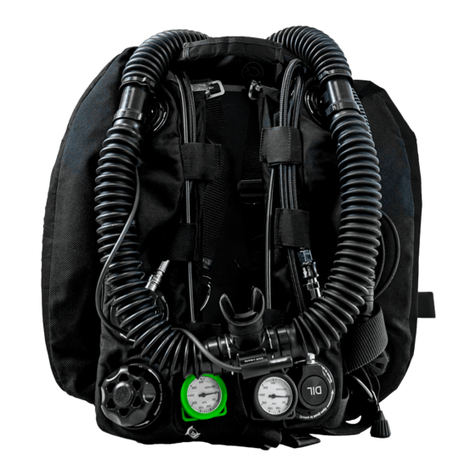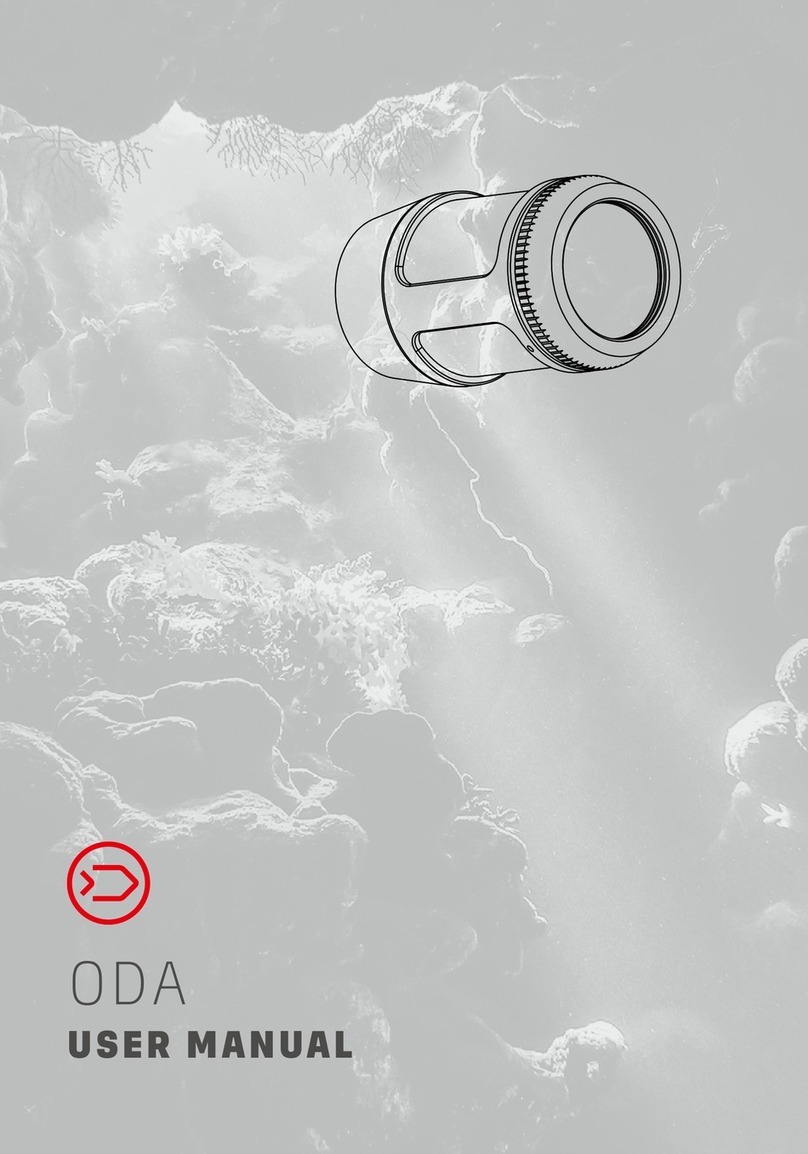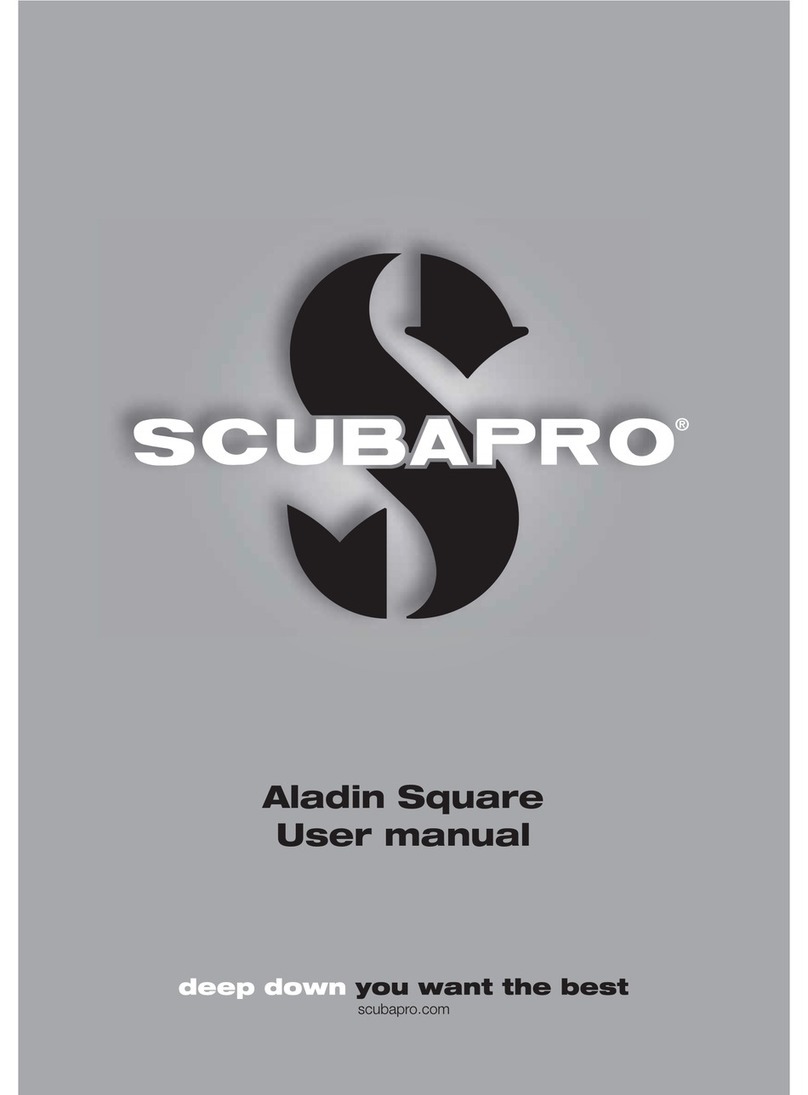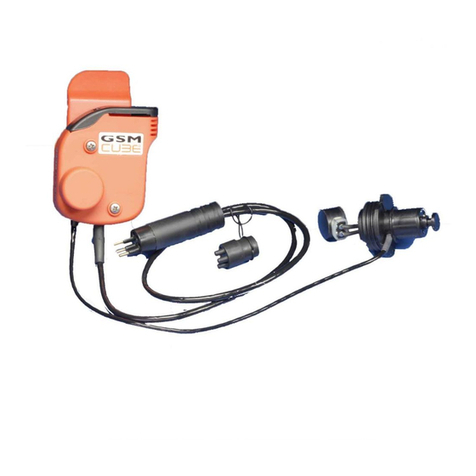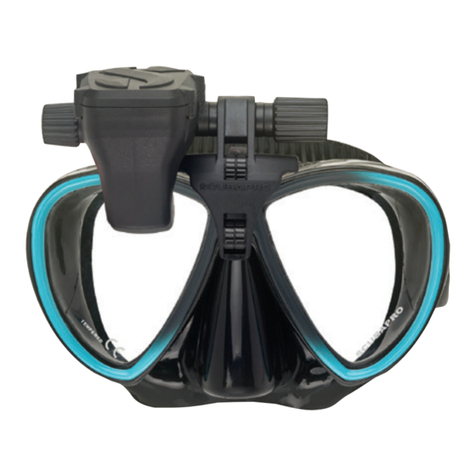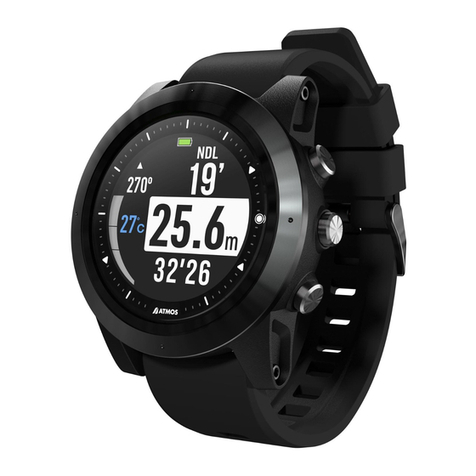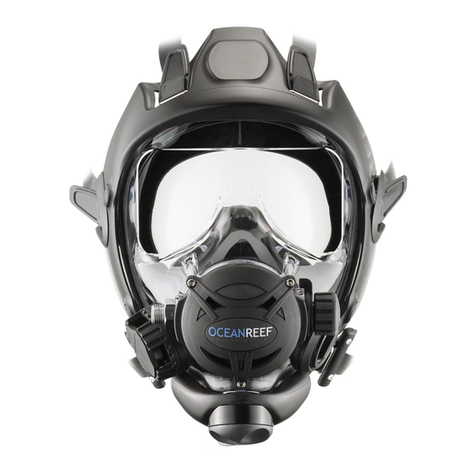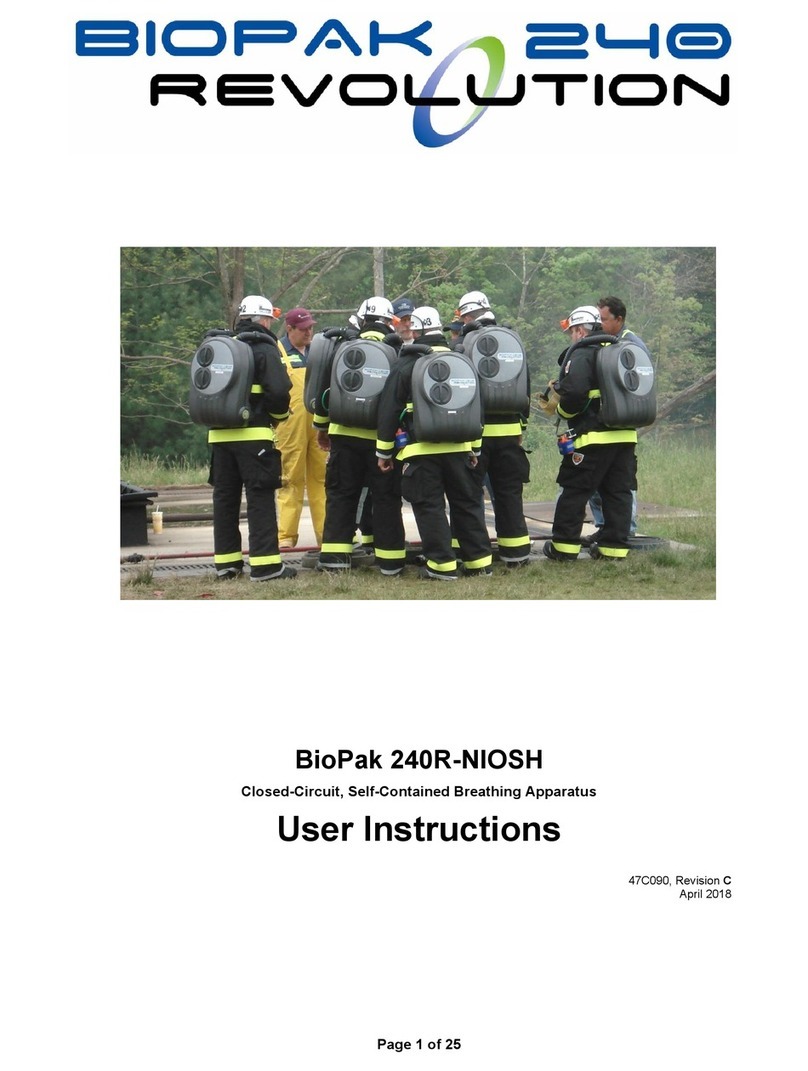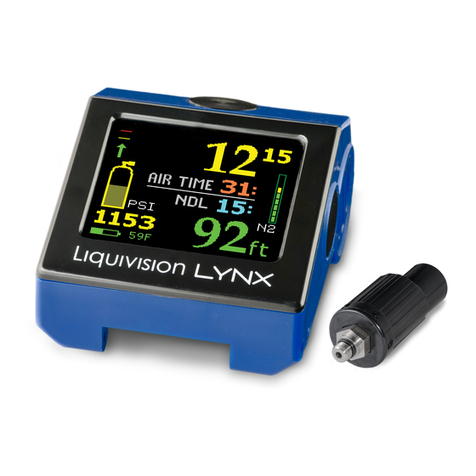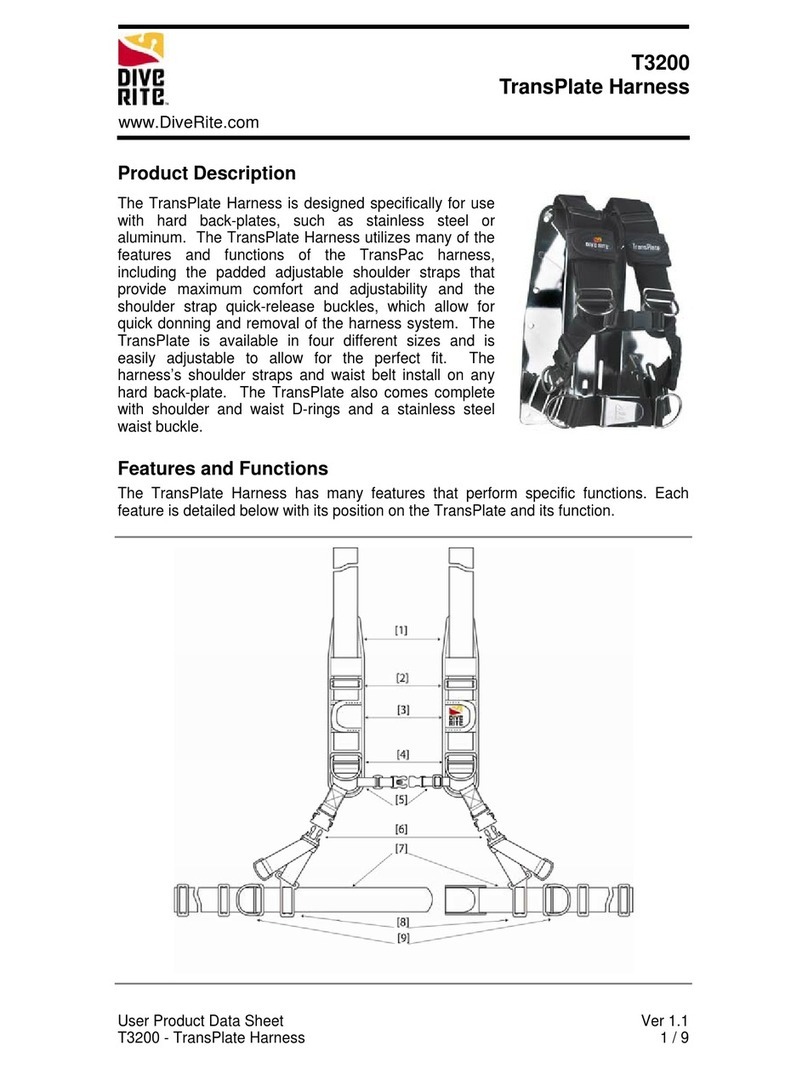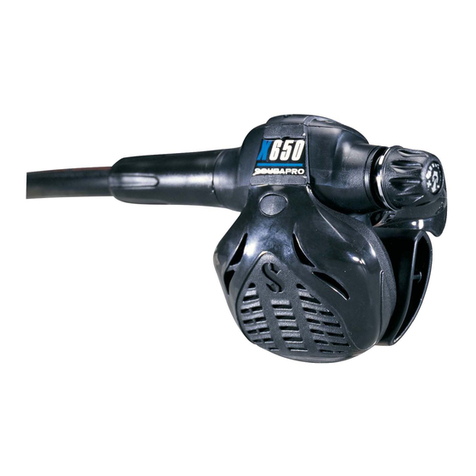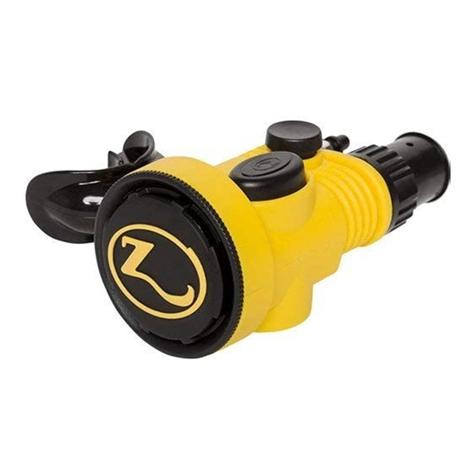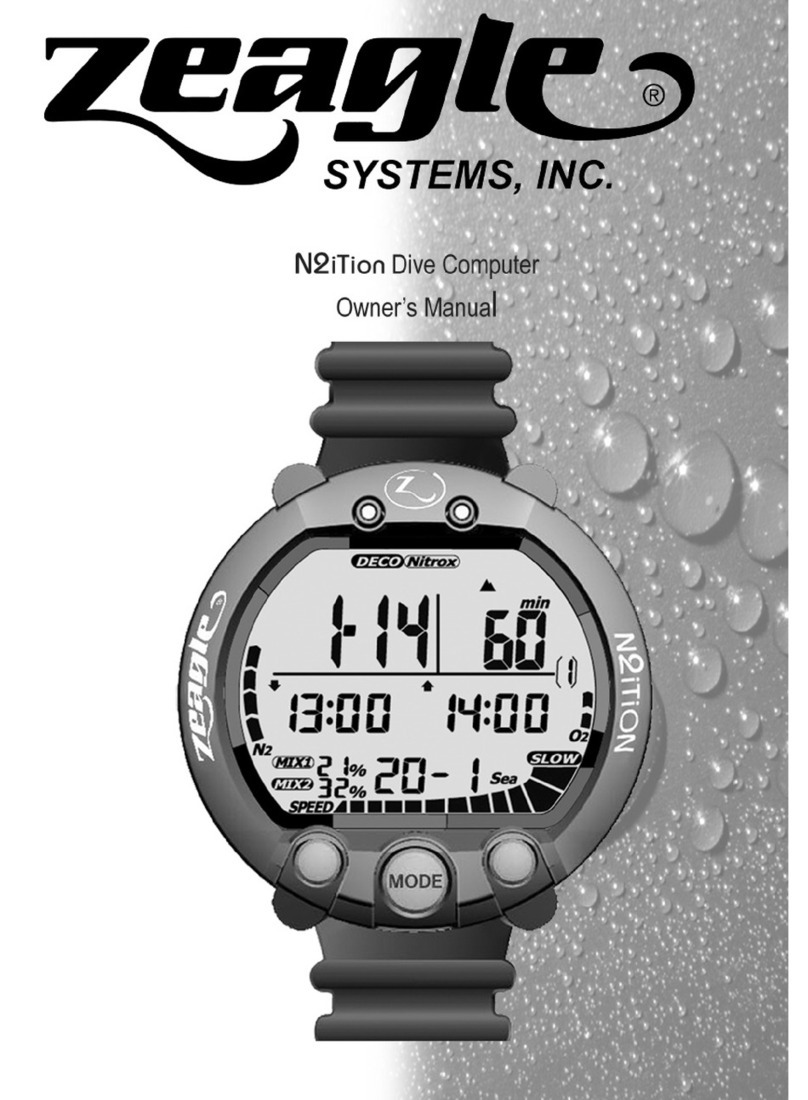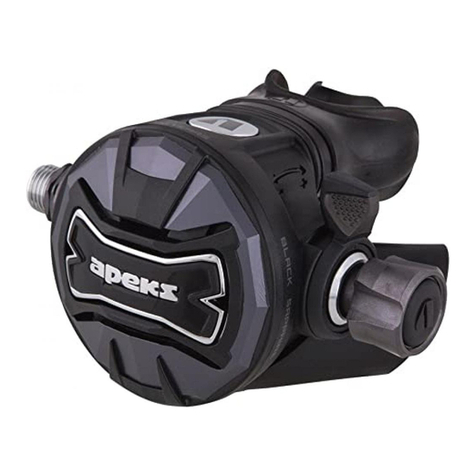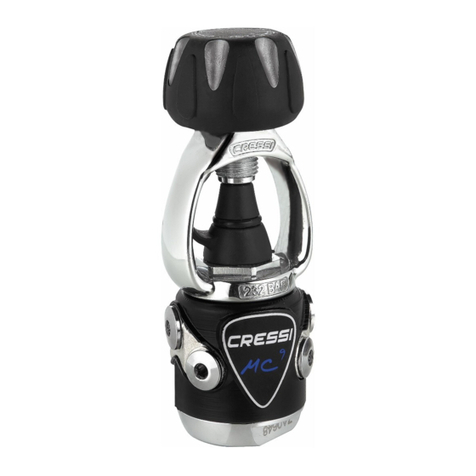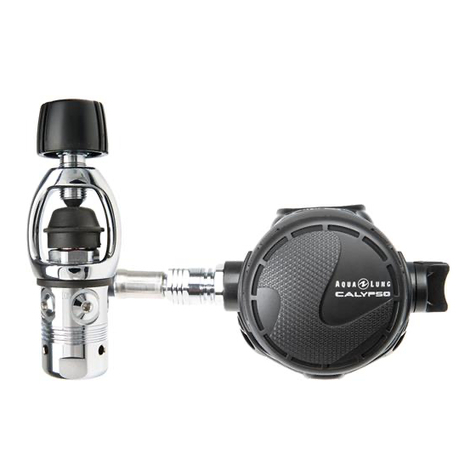Divesoft LIBERTY HEAVY User manual

MANUAL
LIBERTY HEAVY
LIBERTY HEAVY USER MANUAL
Date of issue: 1. 9. 2021
Author: Jakub Šimánek
Published by Divesoft s .r .o .
www.divesoft.com
Divesoft.center MANUAL

2
Content
Introduction . . . . . . . . . . . . . . . . . . . . . . . . . . . . . . . . . . . . . . . . . . . . . . . . . . . 4
Use of this manual . . . . . . . . . . . . . . . . . . . . . . . . . . . . . . . . . . . . . . . . . . . . . . 4
Responsibility of the Liberty Heavy user . . . . . . . . . . . . . . . . . . . . . . . . . . . . . . . 4
Notice . . . . . . . . . . . . . . . . . . . . . . . . . . . . . . . . . . . . . . . . . . . . . . . . . . . . 5
System of documentation . . . . . . . . . . . . . . . . . . . . . . . . . . . . . . . . . . . . . . . . . 6
Version . . . . . . . . . . . . . . . . . . . . . . . . . . . . . . . . . . . . . . . . . . . . . . . . . . . . 6
Technical guidelines . . . . . . . . . . . . . . . . . . . . . . . . . . . . . . . . . . . . . . . . . . . 6
Update of printed documentation . . . . . . . . . . . . . . . . . . . . . . . . . . . . . . . . . . . 6
User support . . . . . . . . . . . . . . . . . . . . . . . . . . . . . . . . . . . . . . . . . . . . . . . . . 6
Use . . . . . . . . . . . . . . . . . . . . . . . . . . . . . . . . . . . . . . . . . . . . . . . . . . . . . . 7
Description . . . . . . . . . . . . . . . . . . . . . . . . . . . . . . . . . . . . . . . . . . . . . . . . . . . 8
Conversion . . . . . . . . . . . . . . . . . . . . . . . . . . . . . . . . . . . . . . . . . . . . . . . . . 8
Assembly . . . . . . . . . . . . . . . . . . . . . . . . . . . . . . . . . . . . . . . . . . . . . . . . . . . . 10
Canister preparation . . . . . . . . . . . . . . . . . . . . . . . . . . . . . . . . . . . . . . . . . . . 11
Assembly . . . . . . . . . . . . . . . . . . . . . . . . . . . . . . . . . . . . . . . . . . . . . . . . . . . . 16
Fixing the Tanks . . . . . . . . . . . . . . . . . . . . . . . . . . . . . . . . . . . . . . . . . . . . . . 17
Fixing the canister with the head . . . . . . . . . . . . . . . . . . . . . . . . . . . . . . . . . . . 17
Hose routing 2×3 litre version . . . . . . . . . . . . . . . . . . . . . . . . . . . . . . . . . . . . . 18
Diluent routing . . . . . . . . . . . . . . . . . . . . . . . . . . . . . . . . . . . . . . . . . . 19
Oxygen routing . . . . . . . . . . . . . . . . . . . . . . . . . . . . . . . . . . . . . . . . . . 19
Hose routing 2×7 litre version . . . . . . . . . . . . . . . . . . . . . . . . . . . . . . . . . . . . . 20
Right post diluent first stage . . . . . . . . . . . . . . . . . . . . . . . . . . . . . . . . . 20
Left post diluent first stage . . . . . . . . . . . . . . . . . . . . . . . . . . . . . . . . . . 21
Oxygen routing . . . . . . . . . . . . . . . . . . . . . . . . . . . . . . . . . . . . . . . . . . 21
Personal customisation of the position . . . . . . . . . . . . . . . . . . . . . . . . . . . . . . . 21
Adjusting the counterlung position . . . . . . . . . . . . . . . . . . . . . . . . . . . . . . . . . . 22
Adjusting the trim . . . . . . . . . . . . . . . . . . . . . . . . . . . . . . . . . . . . . . . . . . . . 22
Location of tanks for dry suit . . . . . . . . . . . . . . . . . . . . . . . . . . . . . . . . . . . . . 23

3
Location of additional equipment . . . . . . . . . . . . . . . . . . . . . . . . . . . . . . . . . . 24
Assembly of the loop and Dive checks . . . . . . . . . . . . . . . . . . . . . . . . . . . . . . . . 24
Maintenance . . . . . . . . . . . . . . . . . . . . . . . . . . . . . . . . . . . . . . . . . . . . . . . . . 25
Storage . . . . . . . . . . . . . . . . . . . . . . . . . . . . . . . . . . . . . . . . . . . . . . . . . . . 25

4
Introduction
Use of this manual
This is the Liberty Heavy rebreather manual.The manual only deals with the specifics of the
Heavy version of Liberty and is only a manual supplementing the basic functions and controls
described in the Liberty main manual. Operation of bailout rebreather mode features is
described in the stand-alone Bailout standby mode manual.
To understand the full functionality of the device, read the CCR Liberty main manual.
The Liberty Heavy is intended for use exclusively by a trained person who is capable of fully
understanding the instructions contained in this manual or is in the process of training with
the Liberty Heavy in a course accredited by the manufacturer..
Responsibility of the Liberty Heavy user
Strong emphasis was placed on reliability during the development of the CCR Liberty Heavy.
Individual internal parts are separated in order to minimize the impact that failure of a given
part may have on the rebreather’s basic functionality. A number of systems have multiple
backups. The logic of the Liberty Heavy’s control never prohibits the start of a dive even in the
event that malfunctions are detected; it only indicates the status if able to do so in light of the
damage. When cave diving, the inability to submerge can mean not being able to return from
a dive; therefore, the Liberty Heavy does not impede submersion.
The user must always decide responsibly whether he/she switches to a backup apparatus or
even starts a dive with a partially malfunctioning rebreather.
A Liberty Heavy user must accept the fact that diving involves risk. Following everything that
the user has learned in the Liberty Heavy’s technical documentation and in training on diving
with this rebreather can reduce the risk but cannot eliminate it. Safety when diving is further
improved by regular training, methodical education and following good diving practices. Diving
with a rebreather requires a far higher degree of carefulness and discipline than diving with an
open-circuit apparatus.

5
If you do not accept the risk and you are not a trained, careful and disciplined diver, do not dive
with the Liberty Heavy.
The manufacturer does not bear any responsibility for use of the Liberty Heavy if the apparatus
has been modified in any way that is not stated in this manual or in the technical guidelines
issued by the manufacturer.
Notice
The Liberty Heavy is not a buoyancy compensator, nor a harness for attaching the device to
the diver’s body.

6
System of documentation
Version
The technical documentation is subjected to a process of continual development and
improvement.Therefore, please regularly check the website at www.CCRLiberty.com for
updates.
Technical guidelines
The manufacturer can issue technical guidelines. It is strongly recommended that the user
regularly checks www.CCRLiberty.com for new guidelines. Registered users will receive
notifications by e-mail.
Update of printed documentation
The electronic form of the manual is always available in its complete, updated form.
The electronic and printed forms of the manual may not be completely identical. In case of
insignificant changes (correction of minor typing errors, for example), only the electronic
version is updated.
User support
Registered users are entitled to technical support. The extent of free support can be limited.
The technical support department at Liberty systems s.r.o. will provide limited support for
potential and unregistered users.Prior to submitting a question, please familiarize yourself
with the general principles of rebreather diving with trimix and the freely available CCR Liberty
technical documentation.

7
Use
Heavy Liberty Rebreather is a modification of the original Liberty Rebreather. Liberty Heavy
retains the complete head of the device including electronics, handsets and all sensors.
However, Liberty Heavy requires a different mounting than the classic Liberty. This procedure is
included in this manual and assembly checklist.

8
Description
Liberty Heavy can be used in a number of different configurations consisting of mutually
compatible parts.The device’s own configuration can be created in the online configurator
https://ccrliberty.com/configurator.
Liberty Heavy brings a new configuration of the popular rebreather with completely redundant
electronics. Divers can clamp the Liberty to their own standard backplate, bringing a high
level of comfort, versatility, and a wide range of height adjustment options for any diver’s body
height. This gives the diver ample headroom that does not restrict anything. The adjustability
of the device’s seating on the back brings the possibilities of fine-tuning the perfect trim.
The Liberty Heavy configuration has a 20 l wing in the base, but any other rebreather wing (with
holes for hose passages) can be used according to the required volume to your chosen size and
number of cylinders.
The Liberty Heavy allows you to change the configuration of the on-board cylinders from the
classic 2–3 liter to the large 7 liter cylinders in DIR configuration. Up to 4 cylinders can be
mounted in various combinations.
The removable wire stand allows very practical and convenient mounting of the off-board
bottles while guaranteeing high stability of the device on land or on the boat.
The stainless steel frame of the instrument is well adapted for easy and elegant hose routing.
The Liberty Heavy is thus an excellent choice for all divers looking for a very comfortable,
compact and stable unit with a wide range of customization options, for divers looking for
a unit for the most demanding dives with many bailout cylinders, but also for recreational
divers at the beginning of their rebreather career.
All the extremely advanced features of the CCR Liberty remain. The configuration uses the
original back-mounted counterlungs and manual valve system right at the mouthpiece. The
work of breathing thus remains unchanged from the highest standard Liberty rebreathers.
Conversion
Liberty Heavy is compatible with the standard CCR Liberty , so it’s possible to convert CCR
Liberty to Liberty Heavy using a conversion kit.

9
The head including the handset and the buddy display, canister and scrubber are used from the
back-mounted device.Alternatively, it is possible to replace the scrubber with a canister for
a shortened version.This version is not a standard part of the conversion kit, and needs to be
requested separately.
By purchasing the conversion kit to the back unit, Liberty Heavy can be rebuilt to classic CCR
Liberty.

11
Canister preparation
Since the Liberty Heavy has a different system of attaching the canister and head to the frame
and backplate, it is imperative to always connect the head and canister with a clip.
WARNING: FAILURE TO USE THE BUCKLE WILL RESULT IN SEPARATION OF THE HEAD FROM
THE CANISTER DURING THE DIVE, CATASTROPHIC FLOODING OF THE BREATHING LOOP AND RISK
OF SERIOUS INJURY OR DEATH
TIP: If using the canister only with the Heavy or in combination with the Liberty Light, always
leave the clip on the canister and do not remove it. This will avoid the embarrassment of
forgetting to install the clip before a dive or losing it.

12
Step 3
Insert the beak of the buckle into the head
lock and secure with the main buckle lever.
The closed buckle on the canister and head
looks like this. All levers of the buckle are
snapped, the buckle is firmly attached to
the head and canister and there is no gap
between the head and canister.
Step 1
Open all the levers on the buckle and insert
the tooth of the buckle into the lock on the
scrubber canister.
Step 2
Secure the buckle position on the canister
with the buckle locking levers

13
To open the head again, first release the lock from both sides at the same time. Tilt the main
lever to the maximum position to separate the head from the canister.
The Liberty Heavy system is based on a frame that carries both the bottles and the canister.
The frame is always the same for all versions of Liberty Heavy. The only difference between the
configurations is the placement of the two types of brackets on the frame.

14
For the 2–3 liter bottle configuration we use the small brackets. If we want to use the so-
called GUE configuration with 7 liter bottles, we use large brackets. In both cases, it is still
possible to attach a second set of bottles via the additional holes for the attachment straps.
Stand for 2×3 litre configuration. Stand for 2×7 configuration

15
Each configuration comes with just one set of brackets suitable for that configuration. In case
of combining different configurations, it is possible to purchase separately brackets for the
given configuration.

16
Assembly
The Liberty Heavy frame is designed so that any wing and backplate can be used as long as
they have standard bolt hole spacing.
Assemble the Liberty Heavy by installing the wing, counterlung assembly and backplate onto
the bolts in the frame one at a time.
TIP: To make it easier to mount the wing and other components to the frame, it is a good idea to
secure the bolt with red ring (included) so that the bolts do not come out of the frame during
assembly of other parts.

17
Fixing the Tanks
Attach the tanks to the frame using straps with an
buckle.
The height of the tanks affects the reach of the
low pressure hoses, so choose a height that will
allow the hoses to reach the intended position.
In particular, the position of the oxygen hose
connection to the solenoid is critical
Close the strap with the buckle and make sure
the tanks are secured tightly enough. Insert the
remaining end of the strap into the elastic loops on
the strap so that it does not float.
Fixing the canister with the head
The head canister MUST BE PRE-ARRANGED WITH
THE CHAIN as stated above.
Stand the canister on the unit stand and screw the
oxygen connection to the solenoid. It is imperative
that this step precedes the attachment of the
canister, as with the canister attached, fingers can
no longer reach the oxygen connection.
SECURE THE CANISTER WITH THE CENTRAL STRAP.

18
Hose routing 2×3 litre version
Two 3l tanks are mounted in the unit with the valves down. Diluent on the left, oxygen on the
right. Both tanks have classic Nautec rebreather valves and are fitted with APEKS DST first
stages with technical connections. The first stages are rotated horizontally and the technical
connections face the diver. The three-hole side faces upwards.

19
Diluent routing
The three upper ports have hoses in order
from left to right 1. BOV+DIL MAV; 2. ADV; 3.
Inflator.
• H HP hose runs upwards along the frame
attached with velcro straps on the side of
the tank, then passes through a hole in the
handle over the diver’s shoulder and the
gauge is attached to the chest D-ring or
under the rubber
• The BOV hose is routed in front of the
frame (between the frame and the
backplate) and is secured with velcro
straps). It does not pass through the wing
but makes an arc over the top of the wing
and is routed along the inspiratory hose
• The ADV hose follows the same route as
the BOV hose
• It is routed through the front of the frame. On the wing it runs from the inflator elbow along
the inflator hose.
Oxygen routing
There are two hoses leading out of the three upper LP ports. The middle port is for the solenoid
hose, the outermost port is for the oxygen MAV.
• The BOV is routed in front of the frame (between the frame and the backplate) and is held
in place with velcro straps). It does not pass through the wing, but makes an arc over the
top of the wing and is routed along the exhaust hose
• Solenoid hose – runs directly along the canister to the banjo.

20
Hose routing 2×7 litre version
Two 7 litre diluent tanks are clamped in the frame with valves upwards, connected to each
other by a flexible manifold. The two first stages of the Apeks DST are fitted with technical
connections, and are positioned vertically, connections downwards.
Right post diluent first stage
• The high-pressure hose from the pressure gauge runs crosswise behind the head to the left
side of the diver, where it is clamped into the D-ring on the belt.
• The 350 mm long ADV hose runs crosswise under the exhalation hose to the ADV T-piece
• The 665 mm long inflator hose runs crosswise under both corrugated hoses to the inflator
hose on the left
• The long hose runs straight down from the bottom port and is fitted with a second APEKS
stage
Table of contents
Other Divesoft Diving Instrument manuals

